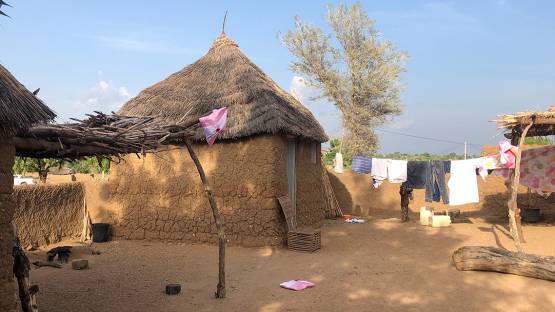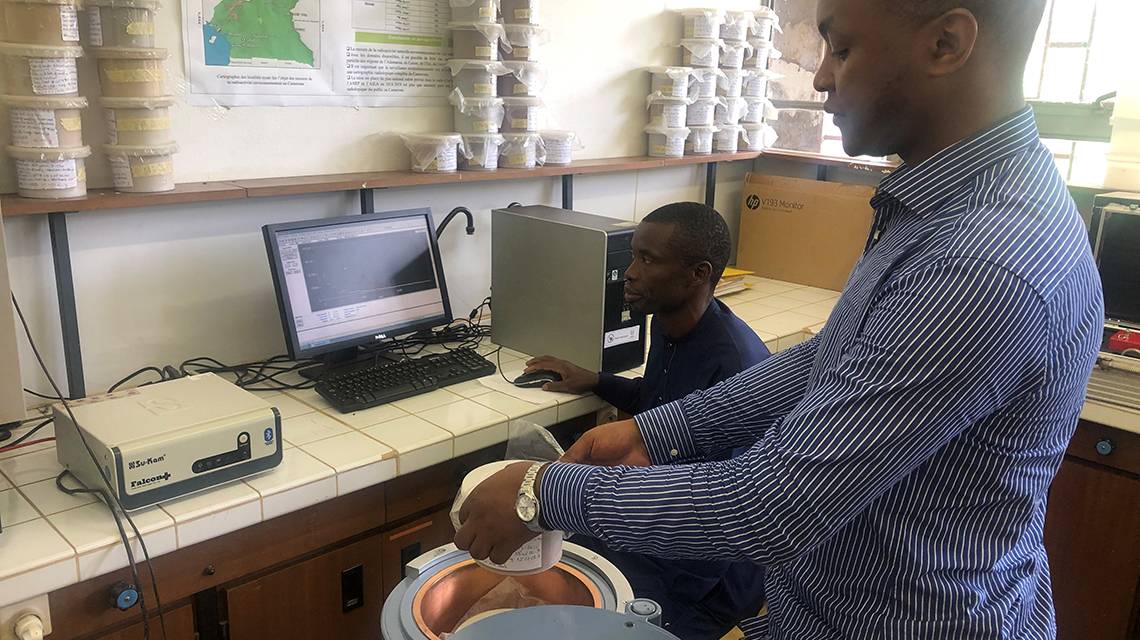NGAOUNDERE AND YAOUNDE, CAMEROON – When Bobbo Hamadou gets up in the morning, he opens the door and window in his house. This is not just to air out his mattress – but to lower the concentration of radon in his home. He lives in one of the 150 dwellings in Ngaoundéré, found to have concentrations of this naturally occurring radioactive substance above the upper level recommended in IAEA safety standards and by the World Health Organization (WHO). Over a quarter of the houses surveyed in this city, capital of the Adamwa region, have high concentrations of radon.
“Dosimeters installed in my home enabled researchers to warn me that radon concentrations are high and that it is important to air out my home properly to avoid radon-related illnesses. Today, I air my house every morning and it has become part of my daily routine,” says Hamadou, who is the chief of a local district.
In a first of a kind pilot study in Africa, researchers at Cameroon’s Institute of Geological and Mining Research surveyed 3,000 dwellings across the country, including in areas that contain uranium deposits, where radon is often present at high levels. Over 2 per cent of the homes surveyed had radon concentrations above the upper IAEA recommended level of 300 Bq/m3, and a whopping 49 per cent were above the more conservative level recommended by WHO of 100 Bq/m3. Based on the data gathered – to be published in an article currently in press in the Journal of Radiation Protection and Research – the average radon level in Cameroon is 107 Bq/m3, versus the global average of just 40 Bq/m3.
“Our geology predetermines Cameroon for higher natural concentrations of radon, particularly in the north, south and west of the country, which are highly populated areas,” said Saidou, Chief of the institute’s Research Centre for Nuclear Science and Technology. The research was carried out with financial and technical support of the IAEA, along with other partners, including radiation protection institutes in India, Japan and Switzerland, which donated track detectors for measuring indoor radon levels.





